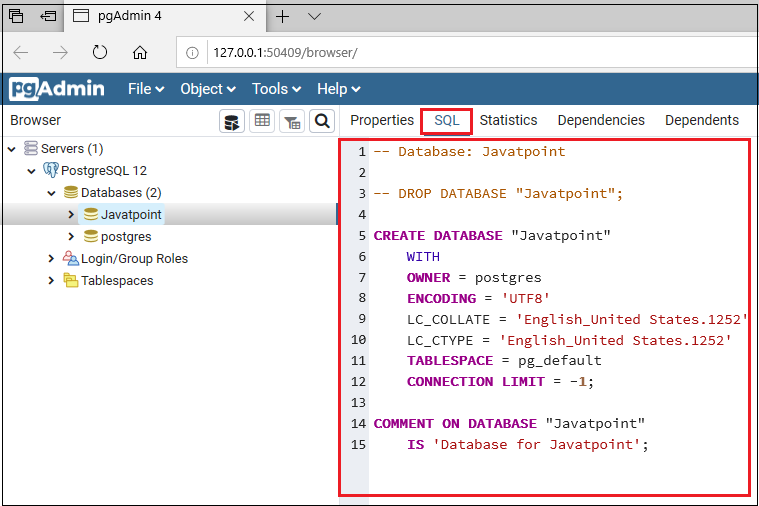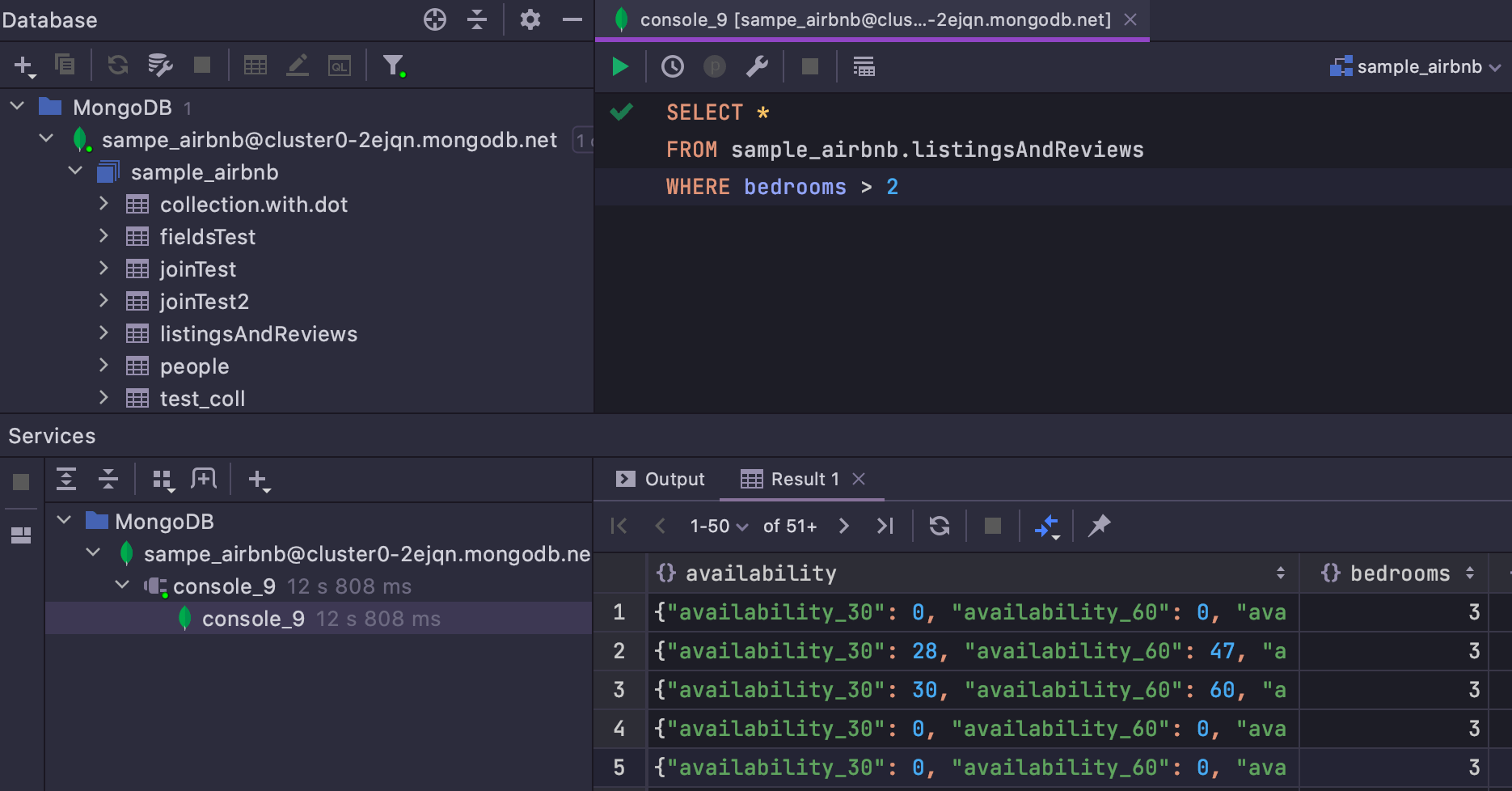
- #Create database postgres datagrip install#
- #Create database postgres datagrip update#
- #Create database postgres datagrip code#
- #Create database postgres datagrip password#
- #Create database postgres datagrip windows#
#Create database postgres datagrip windows#
In the Files tool window ( View | Tool Windows | Files), navigate to Scratches and Consoles | Database Consoles |, double-click a console file. When a console is open, you can write SQL here, run it and get the result. Read more about the single session mode in Single session mode. You can work with just one connection for the data source and have all consoles use that same one connection. New console means a new connection to a data source. Right-click a data source and select New | Query Console.Ĭlick a data source, press Alt+Insert, and select Query Console.Ĭlick a data source, press Control+Shift+F10, and select New Query Console.Ĭlick a data source and press Command Shift L. To create a console, use one of the following actions in the Database Explorer ( View | Tool Windows | Database Explorer).Ĭlick a data source and select File | New | Query Console. Work with console files Create a query console If the executed statement does not retrieve data, results are displayed in the Output tab. For more information about creating custom titles for result tabs, refer to Use custom titles for tabs with results. If the executed statement retrieves data (for example, SELECT), results are displayed in the Result tab that has a title of a qualified table name. For more information about the Services tool windows, refer to Services tool window. The Services tool window displays available connection sessions, Output and Result tabs. When you execute a statement, the Services tool window opens. Read more about the editor in Editor basics.
#Create database postgres datagrip code#
The code editor is where you compose your SQL statements using the resolve modes and coding assistance features, and execute them against the associated data source.įind the code editor toolbar controls in Code editor controls. You can change the console session to actor or create a new session and attach the console to it. In the following example, the PostgreSQL console is associated with the guest.public schema of a data source and connected to it via the console connection session. You can create new connection sessions and attach your console to existing ones in the console toolbar. Database connection sessionįor each console, a database connection session is created automatically. For more information about the New UI, refer to the corresponding topic.įor more information about working with query results in query consoles, refer to Query results. Starting from version 2023.1, the New UI is available. In the video, the DataGrip user interface is Classic UI.


The following video gives a short overview of query consoles in DataGrip. On your machine, the query console files are stored in the consoles subdirectory of the IDE configuration directory.

To open this folder, open the Files tool window ( Alt+2) and navigate to Scratches and Consoles | Database Consoles. If you do not want to create new connections, enable single session mode.Īll the created query consoles are located in the internal Database Consoles directory. If necessary, you can create additional query consoles.Įach console creates a new connection session. When you create a data source, the data source's default query console is created automatically. You can write and execute SQL statements in query consoles the same way as you do it in terminal. Enjoy the successful connection.Query or database consoles are SQL files that are attached to a data source. Now open DataGrip on your local system and connect. etc/init.d/postgresql restartĪll is done on the server side. Uncomment the listen_addresses setting and set *: listen_addresses='*' Second update: sudo vim /etc/postgresql/9.5/main/nf
#Create database postgres datagrip update#
Now you need to update postgres configuration to allow users to connect the database from anywhere.įirst update: sudo vim /etc/postgresql/9.5/main/pg_hba.confĪdd the following: host all all 0.0.0.0/0 md5 So that you can connect the database publicly. Now if you server port 5432 is now publicly open then open it your server firewall and security setting.
#Create database postgres datagrip password#
You have a user, password and a database. Please remember this password, this will require to connect your database. This will ask for a password to be set for the user. Now your current active user is postgres. So first you need to switch your user to postgres. Now I will create a new user and database named sheetal. So let's create a user in ubuntu server: sudo adduser sheetal To create a user in Postgres you first need to create a user on your server with the same name. Now you need to create a new user with a password so that you can connect the database using your app or any database connection tool like DataGrip.

Currently, your database user is Postgres that has all database related privilege. PostgreSQL is installed on your Ubuntu server.
#Create database postgres datagrip install#
Update apt-get and install PostgreSQL: sudo apt-get update sudo apt-get install postgresql postgresql-contrib


 0 kommentar(er)
0 kommentar(er)
